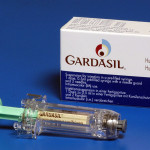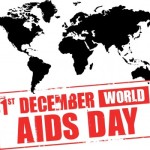Another Celebrity Blames Oral Sex for Tongue Cancer

In May 2015 we reported that Iron Maiden lead singer Bruce Dickinson had been given a clean bill of health after being diagnosed with tongue cancer 3 months earlier.
Now, in an interview with Sirius XM radio host Eddie Trunk, Dickinson is blaming oral sex as the likely cause of his oral cancer:
“It’s a virus - HPV, human papilloma virus. They all are. I’m almost willing to bet, anytime you hear about somebody who gets tonsil cancer, throat cancer, lung cancer, whatever it is, if they’re not heavy smokers and they’re not massive, heavy drinkers, it’s almost inevitably HPV.
There’s a 500% increase in this type of cancer in men over 40… It’s massive. It’s the same virus that causes cervical cancer. The diagnosis is the same. It’s the same words they use.”
In 2013, actor Michael Douglas revealed in an interview in the UK’s Guardian, that oral sex caused his throat cancer:
“Without wanting to get too specific, this particular cancer is caused by HPV [human papilloma virus], which actually comes about from cunnilingus.”
Dickinson wants people to know how important Douglas’s admission was:
“Everybody makes the jokes about Michael Douglas ‘cos he was having oral sex and it’s just, like, ‘OK, we need to get over that one, guys, because this is kind of serious. There’s hundreds of thousands of people at risk for this.’
“Guys should know, if you get a lump… and you’re over 40, don’t just assume antibiotics will get rid of it. Go and properly get it checked out. It’s important.”
What is HPV?
HPV, also called human papillomavirus, is a group of more than 150 related viruses. More than 40 of these viruses can be easily spread through direct skin-to-skin contact during vaginal, anal, and oral sex.
HPV infections are the most common sexually transmitted infections in the United States. In fact, more than half of sexually active people are infected with one or more HPV types at some point in their lives. Recent research indicates that, at any point in time, 42.5 percent of women have genital HPV infections, whereas less than 7 percent of adults have oral HPV infections.
Sexually transmitted HPVs fall into two categories:
- Low-risk HPVs, which do not cause cancer but can cause skin warts (technically known as condylomata acuminata) on or around the genitals or anus. For example, HPV types 6 and 11 cause 90 percent of all genital warts.
- High-risk or oncogenic HPVs, which can cause cancer. At least a dozen high-risk HPV types have been identified. Two of these, HPV types 16 and 18, are responsible for the majority of HPV-caused cancers.
What is the association between HPV infection and cancer?
High-risk HPV infection accounts for approximately 5 percent of all cancers worldwide. However, most high-risk HPV infections occur without any symptoms, go away within 1 to 2 years, and do not cause cancer. These transient infections may cause cytologic abnormalities, or abnormal cell changes, that go away on their own.
Some HPV infections, however, can persist for many years. Persistent infections with high-risk HPV types can lead to more serious cytologic abnormalities or lesions that, if untreated, may progress to cancer.
How do high-risk HPVs cause cancer?
HPVs infect epithelial cells. These cells, which are organized in layers, cover the inside and outside surfaces of the body, including the skin, the throat, the genital tract, and the anus. Because HPVs are not thought to enter the blood stream, having an HPV infection in one part of the body should not cause an infection in another part of the body.
Once an HPV enters an epithelial cell, the virus begins to make proteins. Two of the proteins made by high-risk HPVs interfere with normal functions in the cell, enabling the cell to grow in an uncontrolled manner and to avoid cell death.
Many times these infected cells are recognized by the immune system and eliminated. Sometimes, however, these infected cells are not destroyed, and a persistent infection results. As the persistently infected cells continue to grow, they may develop mutations that promote even more cell growth, leading to the formation of a high-grade lesion and, ultimately, a tumor.
Researchers believe that it can take between 10 and 30 years from the time of an initial HPV infection until a tumor forms. However, even high-grade lesions do not always lead to cancer. The percentage of high-grade cervical lesions that progress to invasive cervical cancer has been estimated to be 50 percent or less
Which cancers are caused by HPVs?
Virtually all cervical cancers are caused by HPV infections, with just two HPV types, 16 and 18, responsible for about 70 percent of all cases. HPV also causes anal cancer, with about 85 percent of all cases caused by HPV. HPV types 16 and 18 have also been found to cause close to half of vaginal, vulvar, and penile cancers.
Most recently, HPV infections have been found to cause cancer of the oropharynx, which is the middle part of the throat including the soft palate, the base of the tongue, and the tonsils. In the United States, more than half of the cancers diagnosed in the oropharynx are linked to HPV-16.
The incidence of HPV-associated oropharyngeal cancer has increased during the past 20 years, especially among men. It has been estimated that, by 2020, HPV will cause more oropharyngeal cancers than cervical cancers in the United States.
Other factors may increase the risk of developing cancer following a high-risk HPV infection. These other factors include the following:
- Smoking
- Having a weakened immune system
- Having many children (for increased risk of cervical cancer)
- Long-term oral contraceptive use (for increased risk of cervical cancer)
- Poor oral hygiene (for increased risk of oropharyngeal cancer)
- Chronic inflammation
Can HPV infection be prevented?
The most reliable way to prevent infection with either a high-risk or a low-risk HPV is to avoid any skin-to-skin oral, anal, or genital contact with another person. For those who are sexually active, a long-term, mutually monogamous relationship with an uninfected partner is the strategy most likely to prevent HPV infection. However, because of the lack of symptoms it is hard to know whether a partner who has been sexually active in the past is currently infected with HPV.
Research has shown that correct and consistent use of condoms can reduce the transmission of HPVs between sexual partners. Areas not covered by a condom can be infected with the virus, though, so condoms are unlikely to provide complete protection against virus spread.
 The Food and Drug Administration (FDA) has approved two HPV vaccines: Gardasil® for the prevention of cervical, anal, vulvar, and vaginal cancer, as well as precancerous lesions in these tissues and genital warts caused by HPV infection; and Cervarix® for the prevention of cervical cancer and precancerous cervical lesions caused by HPV infection. Both vaccines are highly effective in preventing infections with HPV types 16 and 18. Gardasil also prevents infection with HPV types 6 and 11. These vaccines have not been approved for prevention of penile or oropharyngeal cancer.
The Food and Drug Administration (FDA) has approved two HPV vaccines: Gardasil® for the prevention of cervical, anal, vulvar, and vaginal cancer, as well as precancerous lesions in these tissues and genital warts caused by HPV infection; and Cervarix® for the prevention of cervical cancer and precancerous cervical lesions caused by HPV infection. Both vaccines are highly effective in preventing infections with HPV types 16 and 18. Gardasil also prevents infection with HPV types 6 and 11. These vaccines have not been approved for prevention of penile or oropharyngeal cancer.
Source: National Cancer Institute




























0 comments